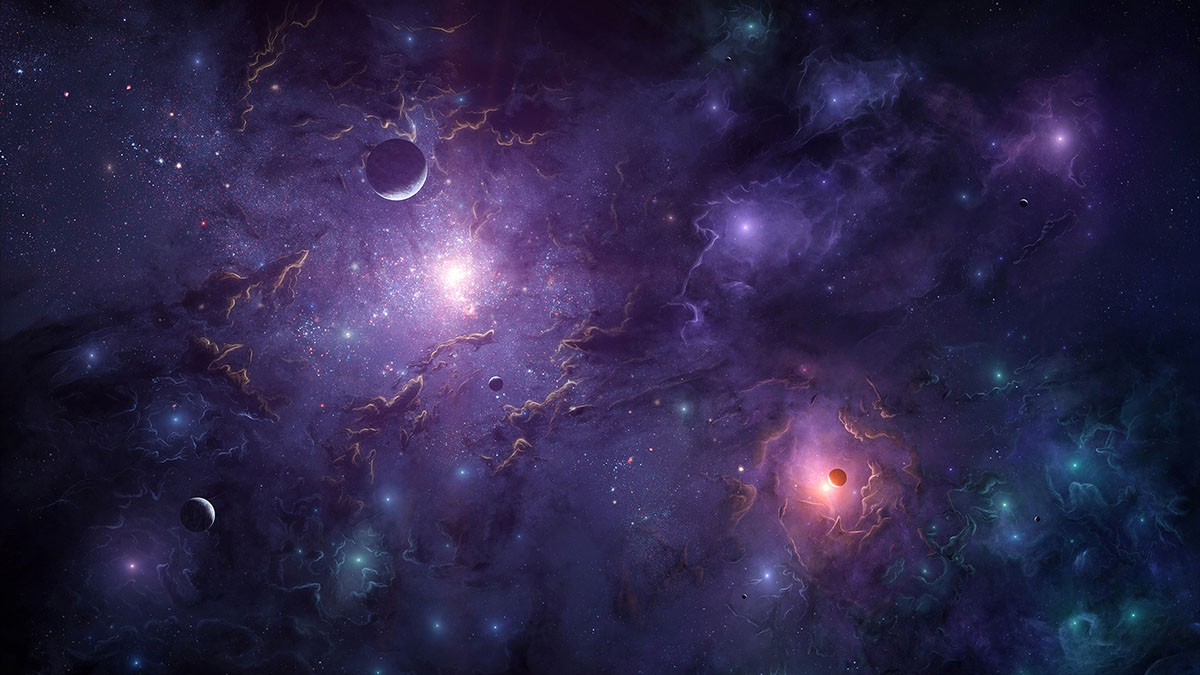wowt explains: what is dark matter?

Despite being the stuff that we think holds entire galaxies together and makes up more than a quarter of the universe, we know very little about dark matter other than it exists. In fact, the name itself is just a placeholder until we figure out more. That said, we have some ideas and threads of inquiry to pursue to at least eliminate lines of inquiry that don’t stand up to proper scientific scrutiny. So, what do we actually know about dark matter and where does the latest research point? Here’s an explainer.
so, what is dark matter?
Short answer? We don’t know. All we understand about it is that it has mass and exerts a lot of gravitational force on galaxies and galactic clusters. Otherwise, we’re not even sure if it’s made of particles the way we understand them and discoveries that could’ve definitely answered that question have been inconclusive or overturned. No experiments managed to produce any dark matter suspects and we’ve been unable to detect any clues as to what it could possibly be. One idea currently being floated is that what we think of as dark matter is actually gravity acting on vast masses and distances, violating the scale invariance we assumed it had.
how much of the universe is made of dark matter?
Based on our observations of galactic mass and motion, it accounts for 27% of the cosmos. By comparison, ordinary matter makes up just about 5% and doesn’t appear to interact with dark matter in any way. It’s commonly found in galactic haloes where its effects tend to be the most noticeable, but the sheer quantity of it means that it should permeate space as we know it. The fact that we still don’t know what it is despite its ubiquity makes it both a fascinating and very frustrating puzzle for cosmologists and physicists.
what happens if dark matter touches matter?
Nothing. Unlike antimatter, which unwinds matter completely, dark matter would pass through ordinary matter with absolutely no effect. So, unlike video games might imply, you could never build a dark matter weapon or bombard anything with it and expect to see any effect. This is in part why particle colliders have been unable to detect the creation of dark matter particles in the aftermath of ions annihilating each other. However, dark matter could interact with itself and it’s possible we’ve detected it doing so in a number of slow moving haloes around galaxies. Unfortunately, these interactions produce no effects other than gravitational, yielding virtually no additional information about it.
are black holes made of dark matter?
Black holes are made of self-gravitating energy, and while it’s possible that they share some traits with dark matter, it’s very unlikely they’re made of it based on the fact that they often interact with ordinary matter in the form of Hawking radiation we can simulate in a lab. As far as we know, dark matter cannot consume matter or emit radiation as it interacts with ordinary particles. The only thing the two entities seem to really share is that gravity appears to be the dominant force governing their existence.
how is dark matter detected?
Since dark matter produces a strong gravitational pull, it bends light as photons travel through and around clumps of it. This effect is known as gravitational lensing and is predicted by the theory of general relativity, and it’s one of the tools that astronomers use to detect black holes, hunt for potential wormholes, and detect other massive cosmic phenomena. By mapping how light bends around galaxies, as well as comparing the mass of stars to the overall masses of galaxies and star clusters based on the gravitational effect they have on their surroundings, we can map how dark matter is distributed in a particular region of space.

This is how we know it clumps around galaxies and has a profound effect on the motions of galaxies and inner mechanics of galactic clusters, as well as how ubiquitous it seems to be. But this data also doesn’t completely rule out the idea that what we call dark matter is just a quirk of gravity and there are models indicating that dark matter behavior is an inevitable outcome of basic forces based on large scale simulations of our universe created by a specially trained AI.
is dark matter the same as dark energy?
No, the two are very different. Dark matter tends to keep things together while dark energy drives large scale cosmic structures apart. Unlike dark matter, dark energy isn’t found in clumps but appears to be a property of space itself on cosmic scales. It’s also accounts for more than twice the mass-energy of the universe as dark matter and is thought to be the culprit behind the expansion of the universe and cosmic inflation. Ultimately, it may result in the heat death of the universe as matter is spread so far and thin, the only places to survive would be around still existing black holes, using their energy to create virtual words.
how much does dark matter weigh?
That depends entirely on what dark matter is. If it’s a particle, its structure would determine its mass. If it’s a field or a quick of gravity, its mass is likely a relativistic effect rather than mass as we understand it. Hypotheses have placed the mass of a single potential dark matter particle anywhere between 7 giga-electron volts, or GeV, and one microgram while others insist that anything lower than 40 GeV couldn’t possibly be considered dark matter. At the upper bound presented here, a dark matter particle would be the size of a human cell. At a lower bound, it would be roughly ten times the mass of a single proton and slightly smaller than the nucleus of a beryllium atom.





